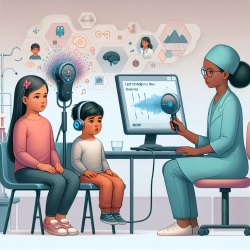Introduction: Bridging the Gap with Technology
In the realm of clinical research, underrepresented populations often face significant barriers that hinder their participation. This not only limits the diversity of data but also perpetuates health disparities. The research article "An Idealized Clinicogenomic Registry to Engage Underrepresented Populations Using Innovative Technology" highlights how cutting-edge technologies can be leveraged to create more inclusive and effective clinical registries.
Understanding the Challenges
Traditional clinical registries often capture a limited snapshot of a patient's health journey, focusing on diagnosis and initial treatment. This approach is particularly problematic for underrepresented minority (URM) populations, who may already be skeptical of clinical research due to historical injustices. Participation gaps in these groups mean that their unique health needs and outcomes are often overlooked in policy decisions.
The Promise of Innovative Technologies
Emerging technologies such as cloud computing, mobile computing, digital ledgers, tokenization, and artificial intelligence offer promising solutions to these challenges. These tools can enhance patient engagement by providing greater transparency and control over personal health data. Distributed ledger technologies, like blockchain, add a layer of trust, which is crucial for engaging URM populations in clinical research.
Implementing Clinicogenomic Registries
To create an ideal clinicogenomic registry, it is essential to integrate these technologies effectively. Here are some key steps practitioners can take:
- Build Trust: Use blockchain to ensure data integrity and transparency, addressing trust issues among URM populations.
- Enhance Engagement: Utilize mobile and cloud computing to facilitate continuous patient engagement and data collection.
- Empower Patients: Allow patients to control their data through tokenization, giving them agency over how their information is used.
- Leverage AI: Train AI models on diverse datasets to improve public health outcomes and reduce disparities.
Encouraging Further Research
While the potential of clinicogenomic registries is immense, there is still much to learn. Practitioners are encouraged to engage in further research to explore the full capabilities of these technologies. By doing so, they can contribute to a more equitable healthcare system that serves all populations effectively.
Conclusion: A Call to Action
The integration of innovative technologies in clinicogenomic registries represents a significant step forward in addressing health disparities. By embracing these tools, practitioners can help ensure that all populations benefit from advances in medical research and treatment.
To read the original research paper, please follow this link: An Idealized Clinicogenomic Registry to Engage Underrepresented Populations Using Innovative Technology.










